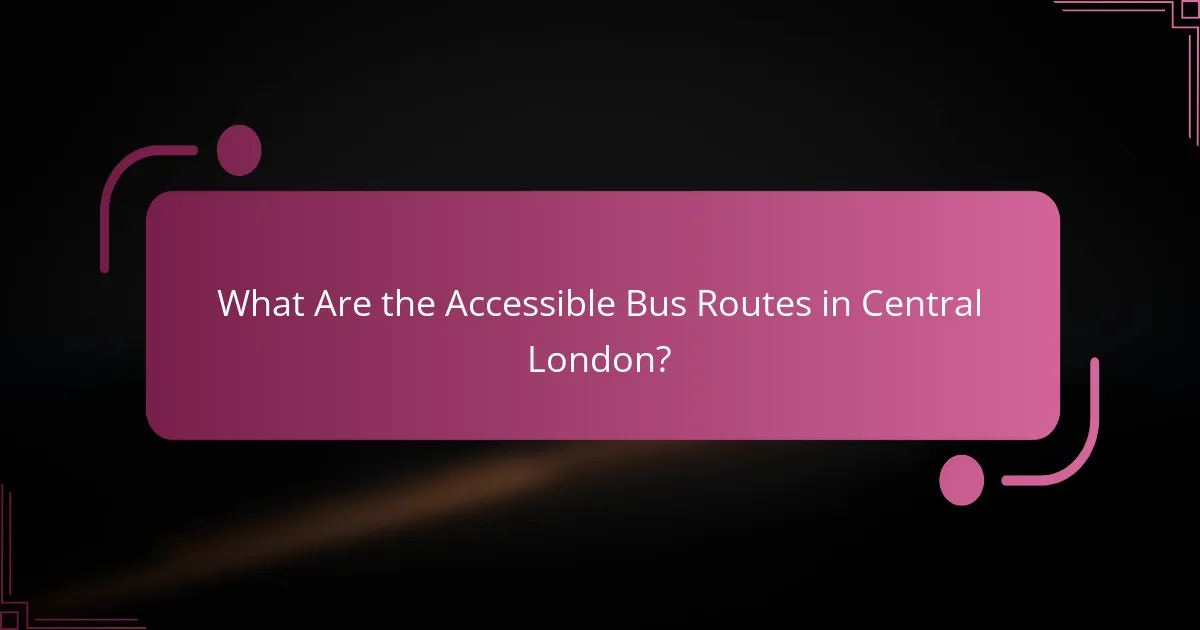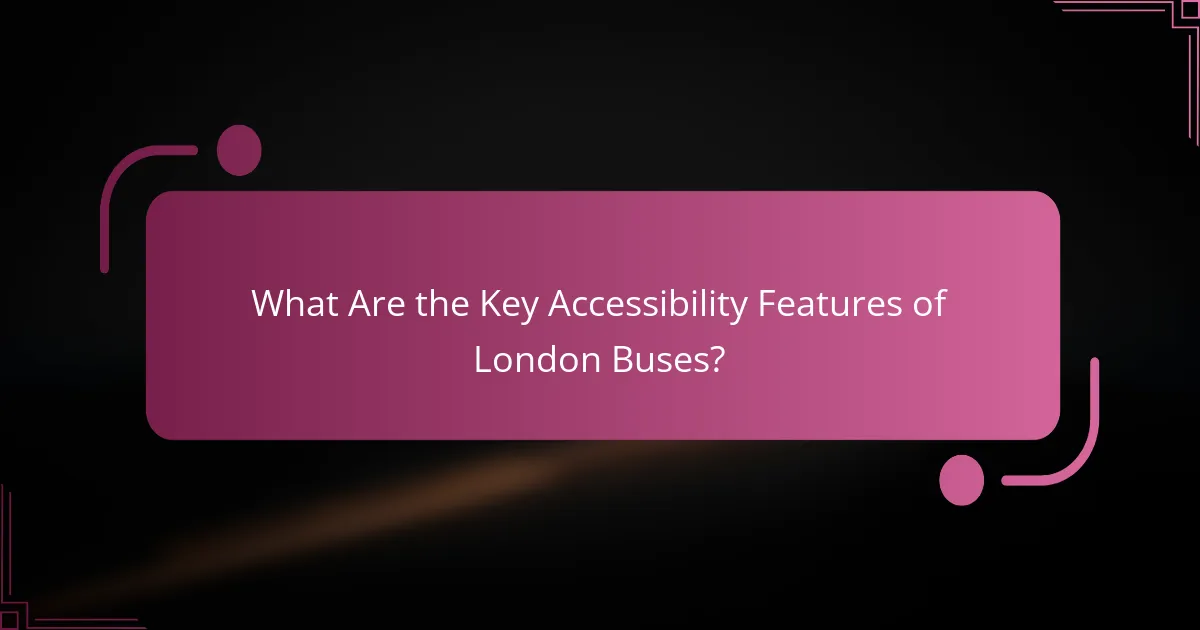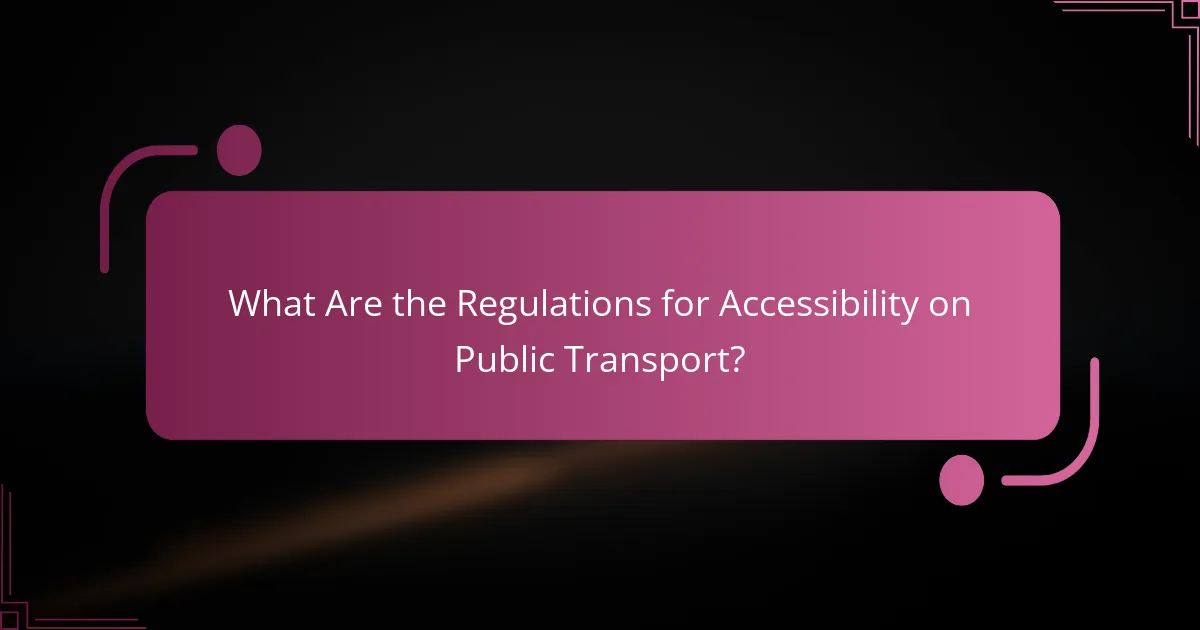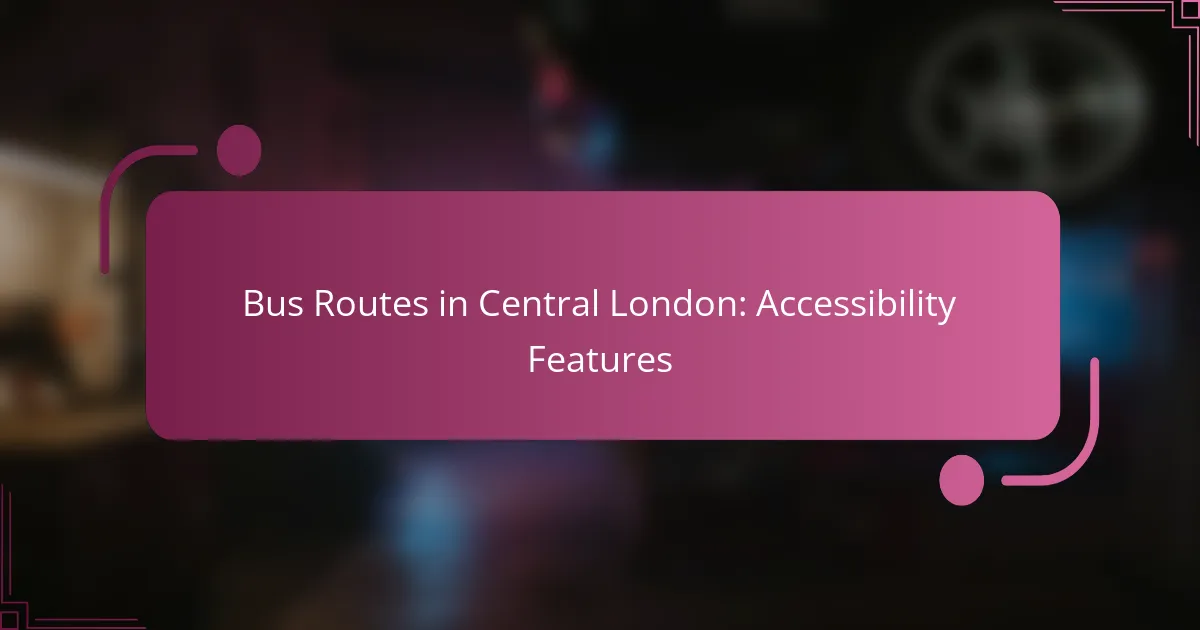Central London’s bus routes prioritize accessibility for passengers with mobility challenges, providing essential features such as low-floor buses and wheelchair ramps. These enhancements, along with audio-visual announcements, ensure a comfortable and safe travel experience for all riders. With designated spaces for wheelchairs and priority seating, London buses are designed to accommodate the diverse needs of the community.

What Are the Accessible Bus Routes in Central London?
Accessible bus routes in Central London are designed to accommodate passengers with mobility challenges, ensuring they can travel comfortably and safely. These routes feature low-floor buses, designated spaces for wheelchairs, and audio-visual announcements to assist all riders.
Route 25: Oxford Circus to Ilford
Route 25 runs from Oxford Circus to Ilford, providing a vital connection across Central London. The buses on this route are equipped with ramps and low floors, making boarding easier for those with mobility impairments.
Passengers can expect regular service throughout the day, with buses typically arriving every 8-12 minutes during peak hours. It’s advisable to check the Transport for London (TfL) website for real-time updates and any service changes.
Route 73: Victoria to Stoke Newington
Route 73 connects Victoria to Stoke Newington, serving a diverse range of neighborhoods. This route features accessible buses that include priority seating and space for wheelchairs, ensuring a comfortable journey for all passengers.
Buses on Route 73 operate frequently, with intervals of about 10-15 minutes during busy periods. Riders should be aware of potential delays during peak travel times and can use TfL’s journey planner for assistance.
Route 149: London Bridge to Edmonton Green
Route 149 travels from London Bridge to Edmonton Green, linking key areas in North London. The buses are designed with accessibility in mind, featuring low floors and audio announcements to assist visually impaired passengers.
This route generally offers service every 12-20 minutes, depending on the time of day. Passengers are encouraged to plan their journeys in advance and utilize TfL’s resources for any accessibility-related inquiries.

How Do Accessibility Features Work on London Buses?
Accessibility features on London buses are designed to assist passengers with mobility challenges, ensuring they can board and alight safely and comfortably. These features include low-floor designs and audio-visual announcements that enhance the travel experience for all users.
Low-floor buses for easy boarding
Low-floor buses are equipped with a design that allows for level access from the curb, making it easier for passengers, especially those using wheelchairs or mobility aids, to board. The entrance is typically at the same height as the sidewalk, which eliminates the need for steps.
These buses often have ramps that can be deployed by the driver, ensuring that everyone can access the vehicle without difficulty. It’s advisable for passengers to signal their need for assistance when approaching the bus to ensure a smooth boarding process.
Audio-visual announcements for stops
Audio-visual announcements on London buses provide real-time information about upcoming stops, enhancing navigation for visually impaired and hearing-impaired passengers. The system includes clear spoken announcements and digital displays that indicate the next stop and any relevant connections.
This feature helps passengers prepare for their journey, reducing anxiety about missing their stop. It is recommended that passengers pay attention to both the audio and visual cues to ensure they disembark at the correct location.

What Are the Key Accessibility Features of London Buses?
London buses are equipped with several key accessibility features designed to assist passengers with mobility challenges. These features include wheelchair ramps and priority seating, ensuring that all individuals can travel comfortably and safely throughout the city.
Wheelchair ramps for mobility access
All London buses are fitted with wheelchair ramps that allow easy access for passengers using wheelchairs or mobility scooters. The ramps are deployed automatically, ensuring a smooth transition from the pavement to the bus floor.
Passengers should be aware that while most buses are accessible, some older models may not have these features. It’s advisable to check the Transport for London (TfL) website for information on specific routes and bus types before traveling.
Priority seating for disabled passengers
London buses feature designated priority seating areas for disabled passengers, elderly individuals, and those with reduced mobility. These seats are clearly marked and are located near the entrance for easy access.
Passengers are encouraged to offer these seats to those who need them, promoting a considerate travel environment. If a passenger requires assistance, they can ask the driver, who is trained to help with seating arrangements and any other accessibility needs.

How Can Passengers Request Assistance on Buses?
Passengers can request assistance on buses by approaching the driver or using designated features available on the bus. It’s important to plan ahead and understand the available options for support during your journey.
Contacting Transport for London (TfL)
Passengers can contact Transport for London (TfL) for assistance by calling their customer service line or visiting their website. TfL provides information on accessible services and can help arrange support for specific journeys.
When reaching out, be prepared to provide details about your travel plans, including the bus route and any specific needs you may have. TfL staff are trained to assist with various accessibility requirements.
Using the ‘Help Point’ feature
Many buses in Central London are equipped with a ‘Help Point’ feature, which allows passengers to request assistance directly from the driver. This feature is typically located near the entrance of the bus and can be activated by pressing a button.
When using the ‘Help Point’, ensure you are visible to the driver and clearly indicate your need for assistance. This can help facilitate a smoother boarding process, especially for those with mobility challenges.

What Are the Regulations for Accessibility on Public Transport?
Regulations for accessibility on public transport in Central London ensure that services are usable by everyone, including those with disabilities. These regulations mandate specific features and standards that transport operators must follow to provide equitable access.
Equality Act 2010 compliance
The Equality Act 2010 requires public transport providers to make reasonable adjustments to ensure that individuals with disabilities can access their services. This includes physical adaptations, such as ramps and designated seating, as well as staff training to assist passengers effectively.
Transport operators must also ensure that information about services is available in accessible formats. For example, audio announcements and visual displays should be clear and easy to understand, catering to various needs.
Transport Accessibility Regulations 2018
The Transport Accessibility Regulations 2018 build on previous legislation, setting out specific requirements for new vehicles and infrastructure. These regulations mandate that all new buses must be fully accessible, featuring low floors, designated spaces for wheelchairs, and audio-visual aids.
Additionally, existing services must be upgraded to meet these standards within a reasonable timeframe. Operators are encouraged to regularly assess their compliance and implement necessary improvements to enhance accessibility for all users.

What Are the Future Trends in Bus Accessibility in London?
Future trends in bus accessibility in London focus on integrating advanced technologies and sustainable practices to enhance the travel experience for all passengers. Key developments include the adoption of electric low-floor buses and improved digital accessibility features, ensuring that public transport is more inclusive and user-friendly.
Increased use of electric low-floor buses
The shift towards electric low-floor buses is a significant trend in London’s public transport system. These buses are designed to provide easier access for individuals with mobility challenges, as the low-floor design minimizes the need for steps and allows for seamless entry and exit.
Additionally, electric buses contribute to reducing air pollution and noise, creating a more pleasant environment for all passengers. London aims to have a substantial portion of its bus fleet converted to electric models in the coming years, aligning with environmental goals and accessibility standards.
Enhanced digital accessibility features
Digital accessibility features are becoming increasingly important in London’s bus services. Innovations such as real-time tracking apps and audio-visual announcements help passengers with disabilities navigate the transport system more effectively.
Moreover, these features are designed to cater to a diverse range of needs, including those of visually impaired and hearing-impaired individuals. As technology evolves, London is likely to implement more user-friendly interfaces and information systems that enhance the overall accessibility of bus services.
